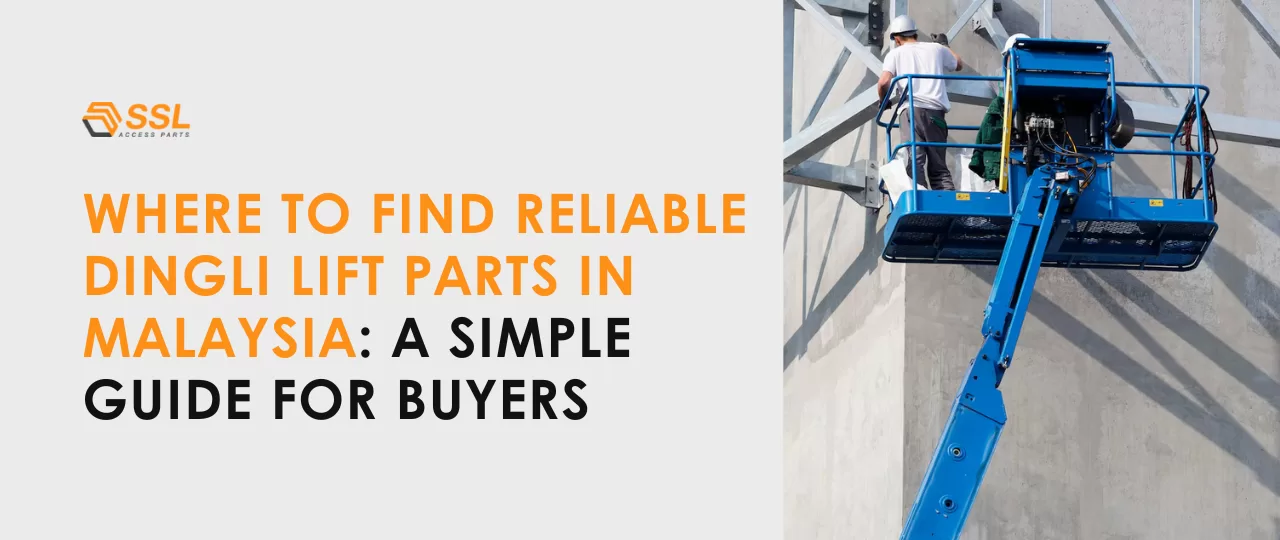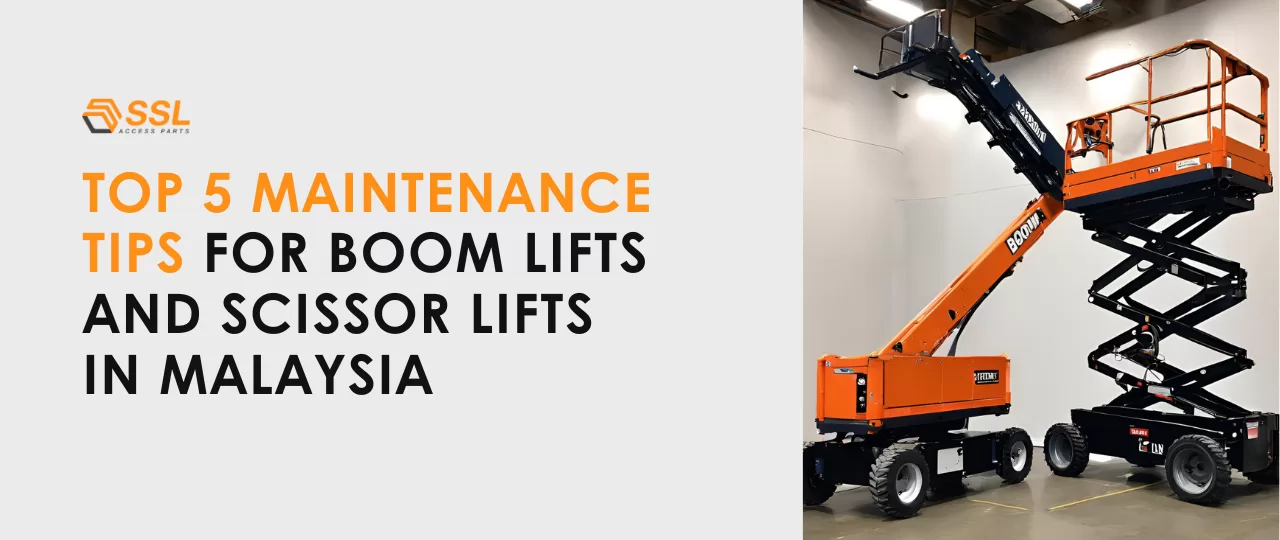Why Lift Tires Matter More Than You Think
If you use boom lifts or scissor lifts on construction sites in Malaysia, you know how important it is to keep your machines in good condition. But one part that many people overlook until it causes a problem is the tires.
Malaysia’s construction sites face unique challenges:
- Monsoon rains → Muddy, unstable terrain
- Urban areas → Debris, nails, and sharp objects
- Long work hours → Tire wear accelerates
Using the wrong tires can lead to serious problems:
- Safety risks, like tipping or unstable movement
- Downtime due to flat or damaged tires
- Premature equipment damage
Whether you’re looking for scissor lift tires in Malaysia or need reliable boom lift tires, choosing the right type — solid or foam-fill — is the first step toward safer and smoother operations.
Types of Tires for Lifts
There are two common types of tires used on lifts in Malaysia:
Solid Tires (Also known as Puncture-Proof Tires)
✔ Pros:
- 100% puncture-proof – No risk of flats, even on rough terrain.
- Long lifespan – More resistant to wear than pneumatic tires.
- Low maintenance – No need for air pressure checks or refills.
- Stable load handling – Better for heavy-duty applications.
✖ Cons:
- Rougher ride – Less shock absorption than foam-filled or pneumatic tires.
- Heavier – May slightly reduce fuel efficiency in mobile lifts.
- Higher upfront cost – But saves money long-term by avoiding downtime.
Best For:
- Construction sites with debris, nails, or sharp objects.
- Heavy industrial use (e.g., factories, shipyards).
- Long-term cost savings over frequent pneumatic replacements.
Foam-Filled Tires
✔ Pros:
- Puncture-resistant – Foam filling prevents flats but retains some cushioning.
- Smoother ride – Better shock absorption than solid tires.
- No air pressure maintenance – Unlike pneumatic tires.
- Good for indoor/outdoor use – More versatile than solid tires.
✖ Cons:
- Not as durable as solid tires – Foam can degrade over time.
- Can still crack under extreme loads – Not ideal for very heavy-duty use.
- More expensive than standard pneumatic tires – But cheaper than solids.
Best For:
- Mixed indoor/outdoor environments (e.g., warehouses with outdoor sections).
- Moderate-duty applications where some flexibility is needed.
- Operators who want a balance between durability and comfort.
Solid vs. Foam-Fill — Which Is Better?
Here’s a quick side-by-side comparison to help you decide:
| Feature | Solid Tires | Foam-Fill Tires |
|---|---|---|
| Puncture Resistance | ✅ 100% puncture-proof | ✅ Highly puncture-resistant |
| Ride Comfort | ❌ Firm, rougher on uneven ground | ✅ Smoother and more flexible |
| Weight | ⚖️ Heavier | ⚖️ Slightly lighter |
| Cost | 💲 Usually lower upfront | 💲💲 Slightly more expensive |
| Durability | ✅ Very tough and long-lasting | ✅ Long-lasting |
| Maintenance | ✅ Very low maintenance | ✅ Low maintenance |
| Shock Absorption | ❌ Less flexible, harder feel | ✅ Good for uneven terrain |
| Best For | Harsh sites, no-maintenance users | Comfort-focused jobs and mixed terrain |
Still Not Sure? Ask Yourself:
- Do I need long-lasting tires?
- Will comfort and smooth movement matter for my work?
- How much maintenance am I willing to do?
✨Our Tips:
- Go with solid tires if you want maximum durability and don’t want to deal with punctures or regular upkeep.
- Choose foam-fill tires if you prefer a more comfortable ride and work in both indoor and outdoor environments.
Maintenance Tips for Long-Lasting Tires
- Inspect regularly for cracks, wear, or damage.
- Clean tires after exposure to chemicals or rough terrain.
- Avoid overloading beyond the lift’s capacity.
- Rotate tires (if applicable) to ensure even wear.
📞 Need Help Choosing the Right Tire?
At SSL Access Parts, we carry a wide selection of scissor lift tires, boom lift tires, and foam-fill tires in Malaysia — ready for fast delivery.
📱Send us your machine model
📞 WhatsApp: +6014-666 7229
🔎 Read also: Top 5 Maintenance Tips for Boom Lifts and Scissor Lifts in Malaysia
Frequently Asked Questions (FAQ) About Lift Tires
1. What’s the difference between solid and foam-fill tires for lifts?
Solid tires are made of solid rubber and are 100% puncture-proof, offering long-lasting durability but with a rougher ride. Foam-fill tires are a hybrid of solid and pneumatic tires, providing puncture resistance with better shock absorption, resulting in a smoother ride.
2. How do I know if my lift needs solid or foam-fill tires?
If you frequently work on rough construction sites with debris or sharp objects, solid tires are ideal because they are puncture-proof. However, if comfort and shock absorption are important, foam-fill tires may be a better option, especially for mixed indoor/outdoor environments.
3. Can foam-fill tires handle heavy-duty construction?
Yes, foam-fill tires are suitable for short-term projects and sites with minimal rebar hazards, but they should be avoided in environments like steel mills with molten slag, demolition sites with sharp metal or glass, and 24/7 port operations.
4. Are foam-filled tires better than solid tires?
It depends on your application. Foam-filled tires are ideal for mixed indoor/outdoor use, operator comfort, and light to medium-duty applications, while solid tires excel in environments with extreme puncture risks, heavy loads, and harsh conditions due to their durability and long lifespan.
5. How long do solid and foam-fill tires last?
Both tire types are durable, but solid tires generally last longer due to their toughness and lack of cushioning that wears out. Foam-fill tires last a long time too, but the foam can degrade over time under extreme loads or harsh conditions.
6. How often should I inspect lift tires?
- Daily: Check for visible damage before operation
- Weekly: Measure tread depth (minimum 3mm)
- Monthly: Full inspection including sidewalls
7. Can I replace the tires on my scissor lift or boom lift myself?
Replacing lift tires requires some technical know-how and equipment, so it’s generally recommended to seek professional help or consult your lift’s manual.
If you’re unsure, we can guide you in selecting the right tire and offer replacement services.
8. Are foam-filled tires completely puncture-proof?
No – they’re puncture-resistant but can still be damaged by:
- Extreme sidewall impacts
- Long-term chemical exposure
- Sharp rebar at 45° angles
Disclaimer Statement:
We hope you found this article helpful. Our content is intended for general informational purposes only and does not constitute advice or necessarily reflect the full range of services offered by SSL Access Parts Sdn. Bhd. While we strive to provide accurate and up-to-date information, we recommend consulting with an expert or referring to the manufacturer’s guidelines for specific advice or repairs. Any use of the equipment mentioned should comply with safety standards and regulations. SSL Access Parts Sdn. Bhd. is not liable for any actions based on the information provided and cannot guarantee the absence of errors or omissions.


